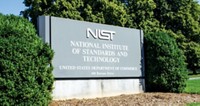Advertisement
Grab your lab coat. Let's get started
Welcome!
Welcome!
Create an account below to get 6 C&EN articles per month, receive newsletters and more - all free.
It seems this is your first time logging in online. Please enter the following information to continue.
As an ACS member you automatically get access to this site. All we need is few more details to create your reading experience.
Not you? Sign in with a different account.
Not you? Sign in with a different account.
ERROR 1
ERROR 1
ERROR 2
ERROR 2
ERROR 2
ERROR 2
ERROR 2
Password and Confirm password must match.
If you have an ACS member number, please enter it here so we can link this account to your membership. (optional)
ERROR 2
ACS values your privacy. By submitting your information, you are gaining access to C&EN and subscribing to our weekly newsletter. We use the information you provide to make your reading experience better, and we will never sell your data to third party members.
Safety
Sabotage At Energy Department Facility
Vandals thaw 3,500 protein crystals under study at SLAC National Accelerator Laboratory
by Jyllian Kemsley
July 28, 2009

More than 3,500 protein crystal samples have been destroyed in an act of vandalism on or about July 19 at the SLAC National Accelerator Laboratory, in Menlo Park, Calif. Both the Department of Energy's Office of Inspector General and the Federal Bureau of Investigation are investigating.
"It's disappointing and astonishing," says Ian A. Wilson, a professor of molecular biology at Scripps Research Institute and the head of the Joint Center for Structural Genomics (JCSG), to which the protein samples belonged. "We have no idea what this is about or why it happened."
The unknown vandal or vandals removed the samples from storage in liquid nitrogen and left them out to thaw, says Robert D. Brown, director of communications for SLAC. SLAC employees discovered the samples on the morning of Monday, July 20, he says.
JCSG is one of four high-throughput centers for determining protein structures that are funded by the National Institute of General Medical Sciences as part of the Protein Structure Initiative. JCSG uses the X-ray beam lines at the Stanford Synchrotron Radiation Lightsource to analyze protein structures.
Since it was founded in 2000, JCSG has screened about 25,000 proteins and solved nearly 900 structures, Wilson says. The center was on track to solve about 250 structures in 2009, he says.
Most of the destroyed samples were archived crystals on which scientists had already collected data, Wilson says, although researchers might have returned to some of them for further analysis. About 120 samples, however, were new and waiting for time in an X-ray beam. It will take weeks to months to re-create these 120 samples, according to Wilson.
It isn't clear whether the target of the vandalism is SLAC or JCSG, Brown says. Although notes were left at the scene, he was not able to discuss their contents. People must get through two separate security gates to reach the scene.
The DOE Office of Inspector General has no comment on the status of the investigation, says spokeswoman Felicia Jones, although she confirmed that the office is jointly investigating the incident with the FBI. The FBI's San Francisco Division did not return a phone message from C&EN asking for information on the investigation.




Join the conversation
Contact the reporter
Submit a Letter to the Editor for publication
Engage with us on Twitter